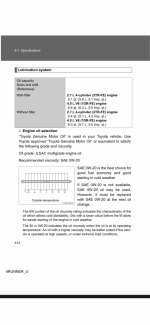Regarding your 4Runner feeling sluggish, that's mostly due to the DBW programming. Having a soft response improves the MPG. Of course you can deliberately put your foot down and it will accelerate respectably. It's never going to accelerate like a Sportbike...
There are products such as the Pedal Commander, Sprint Booster, etc. Which you can install between the gas pedal and the the wiring harness, which will make the gas pedal action more responsive.
As for the 1GR-FE in the Tacoma and the 1GR-FE in the the 5th gen 4Runner being virtually the same, they really aren't. Despite sharing the 1GR-FE designation, the Tacoma is Single VVT-i, and the 5th gen 4Runner is Dual VVT-i.
It doesn't sound like much difference, but the 1GR-FE W/Dual VVT-i in the 5th gen 4Runner has a different block, crankshaft, pistons, cylinder heads, intake, and exhaust, etc.
Part of the reason that allows the specing of 0w20 on the Dual VVT-i 1GR-FE, is due to improvements in cooling in the block, and less friction in the valvetrain due to roller rockers, with hydraulic valve lash adjusters. However, the same engine is approved up to 15w40 in Puerto Rico, and 20w50 in the Australian market.
Our 0w20 spec is CAFE and EPA driven.
Re: Embraer Regional Jets. I've been on thousands of flights in those, and I'm still alive. Please keep up the good work...

